Review: Eduard 1/48 Hawker Tempext V, Srs 1 – a detailed construction review
When Sydney Camm first designed what became the Typhoon in the late 1930s, not that much was known about high speed flight and heavy weaponry, with the result that the Typhoon's wing turned out to be too thick. The result was that Camm began working on the P.1012, known as the Typhoon II, which would feature a thinner wing. In March 1940, it was decided to adopt a NACA “laminar flow” airfoil with a maximum thickness-to-chord ratio of 14.5% at the root, 10% at the tip. The wingspan was originally greater than that of the Typhoon but was clipped to 41 feet, two feet shorter than the Typhoon, with an elliptical wing shape to provide room for 200 r.p.g. for each of the four 20mm cannon the airplane would carry. The new design was finalized by October 1941; the Air Ministry issued specification F.10/41, been written to fit the aircraft. In February 1942 the name became officially Tempest.
The first Tempest prototype flew on September 2, 1942. Initially, it was not as maneuverable as expected, but when the ailerons were modified with spring-loaded trim tabs, maneuverability was outstanding. In tests with Allied and captured enemy types, it outperformed the Mustang and Spitfire below 20,000 feet and only the Fw-190a could out-roll it. Below 22,000 feet, it was the fastest Allied fighter of the war, capable of 376 mph at 1,000 feet, with a top speed of 435 mph at 20,000 feet. Engine problems led to cancellation of other versions and finally, on June 21, 1943, the first Tempest V, powered by the 2,235 h.p. Sabre IIA series engine, took flight. The first 100 “Series 1” aircraft had long-barreled 20mm cannon that extended beyond the leading edge of the wing; all subsequent “Series 2” aircraft used short-barreled weapons that did not. The EJxxx and subsequent Series II aircraft used the Sabre IIB engine providing 2,400 h.p. Interestingly, during the war the Tempest never used the gyroscopic gunsight used by the Spitfire and Mustang.
The Tempest entered service in April 1944 with 3 and 486 Squadrons with 56 Squadron attached in May as 150 Wing, led by Wing commander Roland Beamont, who had taken the first Typhoon unit into combat and had been involved over the previous year in testing and development of the Tempest as a test pilot at Hawkers.
The Tempest first saw combat on July 8, 1944 over Normandy, where Beamont opened the score with two of the three Bf-109s shot down that day. Soon after, the Germans launched V-1 “buzz bomb” attacks against London and Southern England, and the Tempest, as the fastest low-medium altitude fighter, was held back to defend against this weapon. The Tempests were responsible for 636 of 1,846 V-1s destroyed by theAllied air forces by the time the V-1 launch sites were overrun in September. Beamont himself shot down 32 of the pilotless bombs.
On September 21, 1944, 3, 274, 80, 56 and 486 (RNZAF) Squadrons moved to the Continent, replacing the Mustang III squadrons in 122 Wing. Soon based at Volkel in Holland, the Tempests were used for “armed reconnaissance,” - low level attack, strafing against trains and other transport - as well as air superiority, taking on the Luftwaffe frontline fighter units. In February 1945, 222 and 33 Squadrons of 135 Wing converted to the Tempest and were joined by 274 Squadron.
On 2 October 1944. Beamont scored his ninth and final victory of the war when he shot down a Fw-190 near Nijmegen. Attacking a heavily defended troop-train near Bocholt on 12 October during his 492nd operational mission, Beamont was shot down and captured. Confined first at Stalag-III at Sagan in Lower Silesia, then at Stalag III-A at Luckenwalde, Brandenburg, he remained a POW until the end of the war in Europe.
The Tempests went on to become the best British low-medium altitude air superiority fighter of the war over the remaining months of combat, though losses were heavy. 52 German fighters were shot down during December 1944, with 89 trains destroyed, for the loss of 20 Tempests. Following Operation Bodenplatte on 1 January 1945, 122 Wing bore the brunt of low to medium altitude fighter operations for the 2nd Tactical Air Force (2TAF), with Spitfire XIVs of 125 and 126 Wings often providing medium to high altitude cover for the Tempests. The Wing lost 47 pilots in January, 1945.
Throughout the period from January to March, 1945, Tempests flew “rat scrambles,” particularly over the Me-262 and Ar-234 base at Rheine-Hopsten, to catch jets that were most vulnerable during take-off and landing. Luftwaffe pilot Hubert Lange said, "The Messerschmitt Me-262's most dangerous opponent was the British Hawker Tempest — extremely fast at low altitudes, highly-maneuverable and heavily-armed." After seven Tempests were lost to flak at Rheine-Hopsten in a single week, the "Rat Scramble" was discontinued.
In air-to-air combat, the Tempest units shot down 239 German aircraft between November 1944 and the end of the war, achieving an estimated air combat success ratio of 7:1 while accomplishing a 6:1 ratio against single seat enemy fighters.
THE KIT
Kits of the Tempest V have been thin on the ground. Revell produced a Tempes in their 1/72 range in the late '60s, while Matchbox and Heller produced 1/72 kits in the early 1970s, with the Matchbox kit convertible to a Tempest II. Probably the best in this scale is by Academy as it is a much newer tooling. AMT released a 1/48 Tempest in around 1976 that needed a lot of work to become a good model. In 1998, Eduard released a 1/48 Tempest V, which also had a lot of mistakes but was the best kit of this airplane available in terms of detail. Pacific Coast Models' 1/32 kit was the first time the Tempest was done in that scale. Special Hobby has since released both the Tempest V and Tempest II in 1/32 scale.
In 2018, Eduard announced they were releasing a new-mold Tempest V that would be done to their new standards, and would replace their 20 year old limited-run kit.
This kit is fully up to the standard now expected of Eduard with their Spitfires, Bf-109s and Fw-190s. Surface detail is truly amazing, with both flush and raised rivets in appropriate places, and all done “to scale.” The kit cockpit is simplified from the actual cockpit, but most of that difference is not really visible looking in the cockpit of a completed model. For those determined to have an accurate, highly-detailed cockpit, Eduard has released a Brassin cockpit that is at least as detailed as the 1/32 Special Hobby kit is. All control surfaces are separate and the main gear wells are highly detailed.
Decals are provided for five different airplanes, with six different markings. Beamont's famous Tempest is presented with both the initial markings with the early Typhoon-style black and white stripes on the lower wings, and in its more well-known markings with D-Day stripes. A 3 Squadron and 486 Squadron aircraft in the early markings are also done, with 3 Squadron and 486 Squadron airplanes in the later more well-known markings with full D-Day stripes. These are printed by Cartograf. In my experience, Eduard has chosen a too-light shade of “Sky” for the squadron codes and these might better be replaced with aftermarket decals, of which there were many released by Aeromaster and others that are now available from dealers on eBay at reasonable prices.
CONSTRUCTION
This kit maintains the Eduard reputation for being “very fiddly,” and care must be taken throughout the construction to insure all sprue nibs and any minor flash are cleaned off the parts, since they fit very precisely. That said, the end result is worth the extra effort taken during construction.
I found that following Eduard's construction sequence made the process far more difficult than it needed to be. The atmosphere over the workbench was frequently a deep royal purple with thunder rolling and lightning bolts flashing, as I discovered yet another place where following the instructions made things harder than they had to be. As a result, I am going to outline here in detail an alternative method of construction. I am already using this hard-won knowledge on a second kit, and things are working much easier.
So, follow closely:
The fit of parts is really tight, in fact in some places, too tight for most of us to get it properly assembled in a traditional method.
Also, there are a lot of small parts on the sprues, and they have really delicate sprue gates attaching them to the sprue. It is very easy to knock one off unnoticed while cutting another part off the sprue, with that small part disappearing forever, to drive you nuts when you come to the point in the instructions where you are directed to attach it. “Where the @#$##@! is it?!” you will be crying. HANDLE THESE SPRUES WITH EXTREME CARE.
First, the edges of the parts for the radiator assembly, the fore and aft bulkheads of the cockpit assembly (assuming you are using the kit parts), and the wings need to be scraped a bit (the way I have suggested you scrape the area where the wing cannon cover fits to the fuselage in the new Fw-190). Not a lot, but a bit. You also must make absolutely certain you do not paint any of the mating surfaces of the major sub-assemblies because that will affect the assembly.
As regards the cockpit: I suggest you use the plastic instrument panel assembly with decals; it will ultimately fit better than the photo-etch pieces when it comes to shoehorning that instrument panel into the fuselage. Additionally, if you do not use all the photo-etch levers, you will not miss anything; almost all the detail parts will not be visible in the cockpit once assembled.
Now, regarding the fuselage sub-assembly: trim the radiator housing parts and be very careful that you attach them to the fuselage half in the grooves that are there for attachment. If you don't do this, the forward fuselage will have trouble getting squeezed together tight enough for a good joint on the centerline. I suggest you assemble the fuselage before inserting the cockpit assembly. This will allow you to get the part with the fuselage opening properly positioned by working it from inside and outside; pressing it in from outside, as Eduard suggests, will not make a good joint with no gaps; it will in fact create the oposite.
If you cut off the little locating pins on the outside of the cockpit assembly, it is easy to pop it into the fuselage and slide it into position. With the fuselage assembled and the joints set up, there will be no problems associated with later assembly after you get the cockpit into position.
The final difficult bit is the wing sub-assembly. When you assemble the parts of the wheel well into the upper wing, DO NOT attach part E79 (the inner gear door retraction mechanism) to Part E48 (the inner gear well bulkhead) as the instructions would have you do at the outset of the process. Save that part and attach it with tweezers (it's easy) once you are at final assembly and putting the landing gear and doors into position. Otherwise, you are guaranteed to knock off the retraction mechanism. Also, go through the instructions and find ALL the parts that should be attached inside the wells and do them now. DO NOT WAIT till you come across that instruction later - you'll likely have knocked the part off the sprue by then.
Now comes the major hassle attaching the wing sub-assembly to the fuselage. DO NOT fully assemble the upper wing parts to the lower wing before doing this, because that will require you to bend the wing to pop the upper wings into the fuselage to get the large tab inserted correctly. Instead, attach the lower wing to the fuselage, and work the joints from inside and out to get everything fore and aft smooth. Let that then set up so those fore and aft joints are really solid. Then, take the upper wing, insert the tab into the fuselage,and position the upper wing. Once you have run glue around the joint, use rubber bands to squeeze the parts fore and aft, so that joint between the upper and lower parts that runs along a panel line through the flaps is right; you want to squeeze that joint together to get it to look like what the original designer was after. Do not glue the upper wing joint to the fuselage until you have glued the upper and lower wings. Once you run glue along the wing-fuselage joint, use a strong rubber band run around from wingtip to wingtip, to squeeze the wing against the fuselage and get a good solid joint.
If you do all this with the fuselage and wing sub-assemblies, you won't have to use any gap filler, and you won't lose any of that beautiful surface detail. If you do it the way Eduard tells you, you will have to use joint filler along the fuselage centerline, the fore and aft wing-fuselage lower joints and the upper wing-fuselage joint, which you will then have to sand down, losing that great surface detail and if you don't have a nice little pounce wheel like I do, you will be SOL to get that detail back. The horizontal stabilizers and the control surfaces are easy. Assemble then according to instructions.
With regard to the photoetch “fish plates” that strengthened the rear fuselage on the first 50 airplanes, I attached one of these, and the second one went flying into the air and came to earth I know not where. So the model does not have fish plates. I'll note that the Special Hobby kit doesn't have them at all, and none of The Usual Suspects had any complaint.
Also, when you remove the cannons from the sprue, be VERY CAREFUL when you cut them off, because it is very easy to remove the sprue and have a little hole on the part, which shows up very obviously on the upper wing in a way that's hard to fill. You want to cut that sprue joint off along the mating surface carefully.
COLORS & MARKINGS
I had decided to do the famous Tempest V Srs 1 flown by Wing Commander Roland Beamont at the outset of the Tempest's combat career. While many D-day markings were roughly applied, Hawkers painted Beamont's airplane for him at the factory, so these should be neat as a pin. The airplane was also kept very clean by the ground crew. There is no sign of wear on any photos of this airplane.
Yes, D-Day stripes are a PITA. However, the medium-wide Tamiya Tape roll is close enough to "d a m m i t" to be 3/8 inch, which is perfect for the 18-inch stripes. The Tempests had their stripes painted very carefully according to photos, regardless of airplane. I painted white, masked it off, then painted the yellow leading edges and masked them off (having put white below the yellow), then applied the black, then proceeded to pre-shade the rest of the model on panel lines. I used Tamiya RAF Ocean Grey, RAF Dark Green and RAF Medium Sea Grey, with the lower color line masked off and the upper colors freehanded.
The Cartograf decals are excellent, other than the squadron codes are done in too light a shade of Sky anjd won't show up against the stripes. I had no problems applying the kit decals this kit, and sourced Beamont's initials from other decal sheets. I gave the model an overall coat of flat after the decals set up.
The landing gear is easy to assemble; follow the diagrams and all is well. I glued the spinner and prop to the fuselage (a very out-of-the-ordinary method of attachment, but it works), and attached the tail wheel. The windscreen and canopy were unmasked and the canopy positioned in the open position.
CONCLUSIONS
If you like the Tempest, the Eduard kit is for you. It's not for the inexperienced modeler and it will "stretch" the experienced modeler to get what you want, but it is well worth the effort. This is the best Tempest kit in any scale, since it has good outline accuracy and lots of fine detai (Roy Sutherland won't be selling you any "corrected noses," like with the Special Hobby kit). Take your time with assembly and do as I have suggested and you will have a winner.
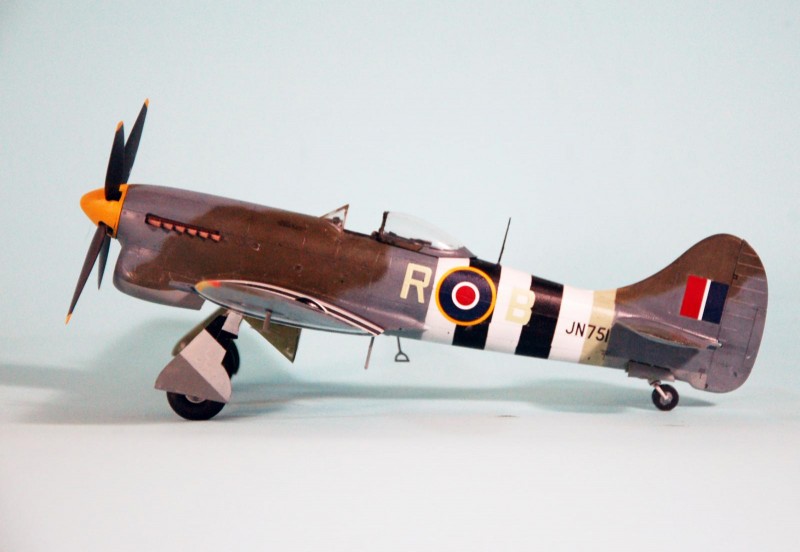
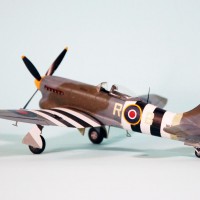
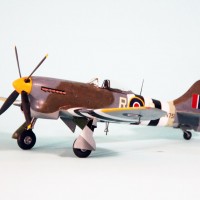
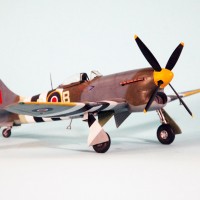
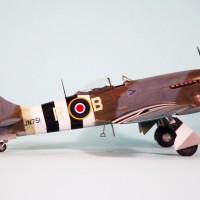
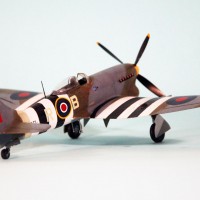
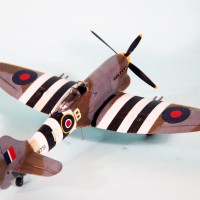
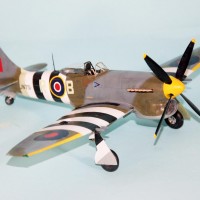
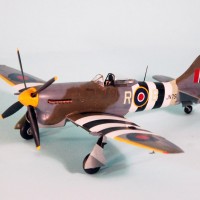
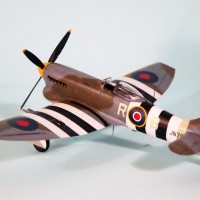
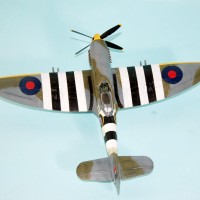
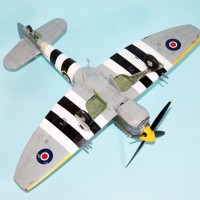
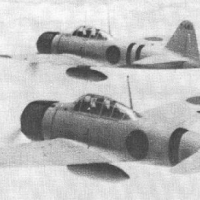
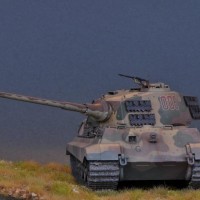
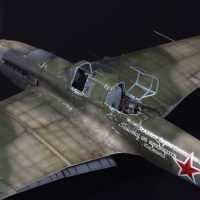
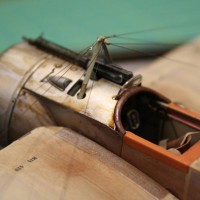
Good article and a great looking build of a great looking aircraft.
when i was 11 my dad brought home "the big show" about wing commander Pierre Clostermann flying this aircraft as well as spits...although this guy seemed pretty arrogant i raced through the book devouring his great exploits with relish...he left me with a lifelong affinity for this beast of an aircraft...this is a great piece of work spawning fond memories to boot
Very good write up and "instructions" on the build. I REALLY love Eduard kits, but as you said, the building sequence and tight fit can be challenging. Well worth the trouble though. I've been looking at this kit. Once again thanks for the review, Tom.
Yer welcome, sir!
Great review of a kit depicting a true classic, Tom. If ever I build a Tempest, this will likely be the one!
Great Review Tom, I really enjoyed the History lesson as well, great build as well.
Amazing work and article!
Thank you
Great write up Tom, I will be referring to this when I get started on mine!
Lovely Tempest - I'm in the middle of the Academy 1/72 version now for a contest theme build. Nice reference subject you've posted for me!
Excellent job .
Great write up and build, looks amazing!